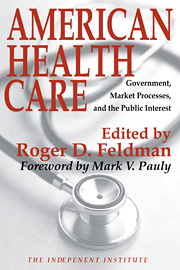Searching for something on which to base his reelection campaign, Gov. Gray Davis has chosen to pose as a champion of health care, with a proposal to mandate increased nurse-patient ratios across the state.
Although his plan will win votes, it won’t improve health care.
Davis’ plan presumes that hospitals are not concerned with caring for their patients and saving lives; that they are not working to get the best outcomes, given what people are willing to pay for health care. A mandate that forces hospitals to use more nurses will result in worse care, as hospitals cut back on other important needs. Health care is inherently risky. The concern that the nurses and their union representatives express about the chances of bad outcomes under current conditions is warranted. Mandating nurse-patient ratios may seem an obvious solution, but it could have unintended consequences.
As health care costs rise in the state as a result of mandated nurse-patient ratios, some employers could decide that it is not worth it to offer health benefits to their employees. The number of people who go without health insurance would increase.
Yes, patients would be better served if hospitals spent more money on nursing and other health care providers, updated technology and supplies. Increasing Medicare and Medicaid reimbursement rates would go a long way toward improving care in this country. But don’t tell hospitals how to use the money, how many nurses to hire or how many sponges to use.
The idea that government can tell hospital administrators how many nurses per patient they should have makes about as much sense as telling auto manufacturers how much steel should go in their cars. The right amount depends on the value of steel in production and its relative price. Both things change over time, and mandated production methods limit flexibility, preclude efficient production and result in fewer desired outcomes.
Under Davis’ plan, hospital administrators would be constrained. It calls for one nurse to every five patients recovering from surgery or serious illness. Emergency room nurses would be limited to one trauma patient, nurses in pediatric wards to four patients and obstetrics nurses to two women in labor.
Perhaps buying new equipment would be a better use of hospital funds to enhance patient safety, but mandated nurse-patient ratios would force hospital administrators to put money in nurses, first and foremost.
Whenever government tries to dictate outcomes, the results are bad news.
If California moves forward with nurse-patient ratios, it will repeat the mistake it made in education, when it mandated class-size reduction in grades kindergarten through third. Class-size reduction had the same objective: to improve outcomes. Yet the reduction has led to a teacher shortage, forcing districts to hire warm bodies with little to no experience in the classroom. These teachers tend to work in the least desirable, most difficult-to-teach classes, in schools shunned by teachers with seniority. Some inner-city schools have 40% of their teachers on emergency credentials. Class-size reduction is great for the rich, bad for the poor.
Increasing nurse-patient ratios would have a similar result. Hospitals in affluent areas would hire more nurses, drawing the best nurses from other, less desirable work environments. Staffing in county hospitals always has been troublesome. With mandated nurse-patient ratios, conditions would deteriorate.
If Davis has his way, you will see more nurses in hospitals. You may even feel you are getting better care. But what you don’t buy in the way of services may kill you.








